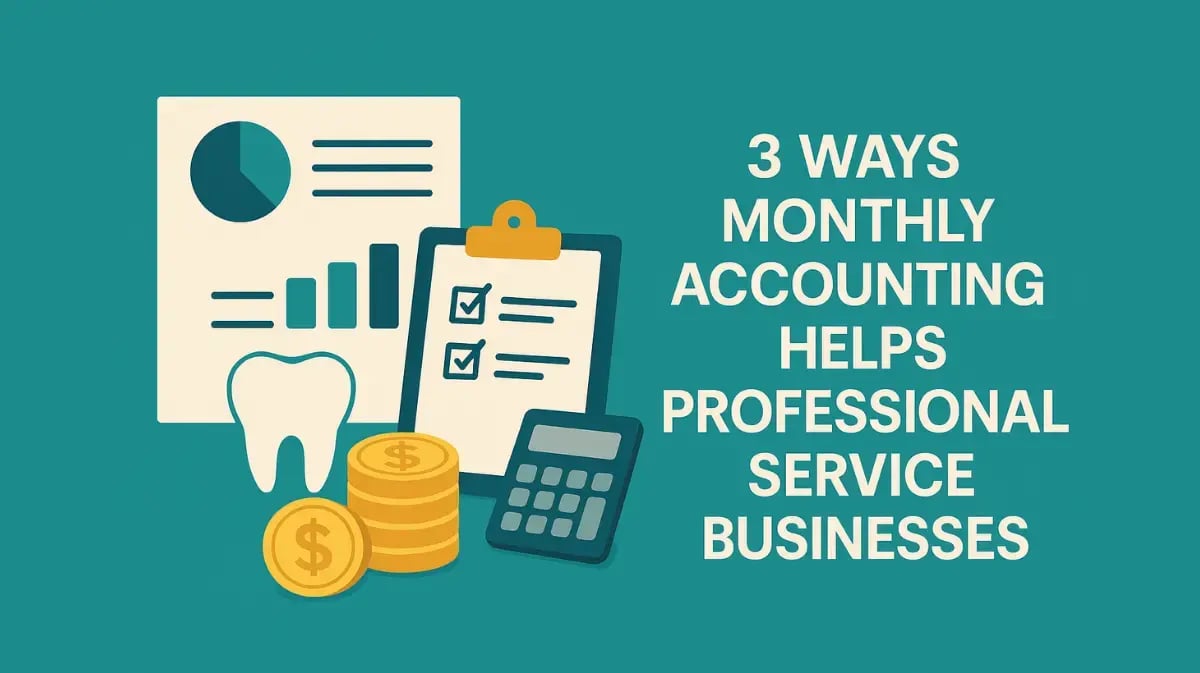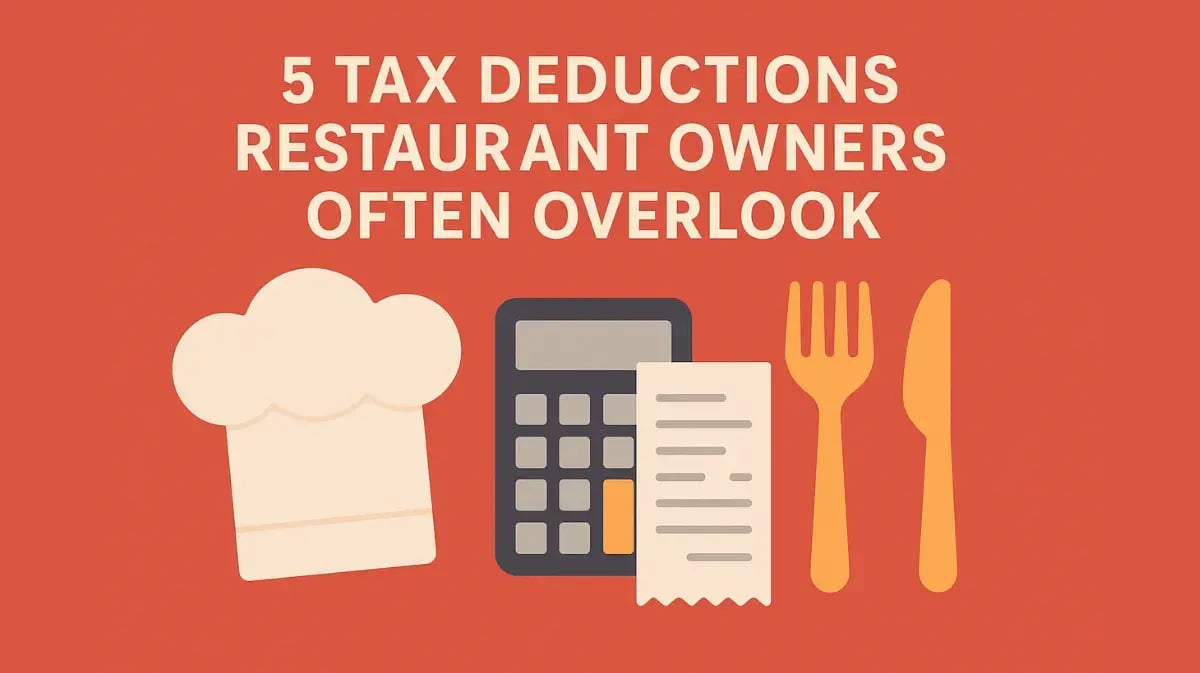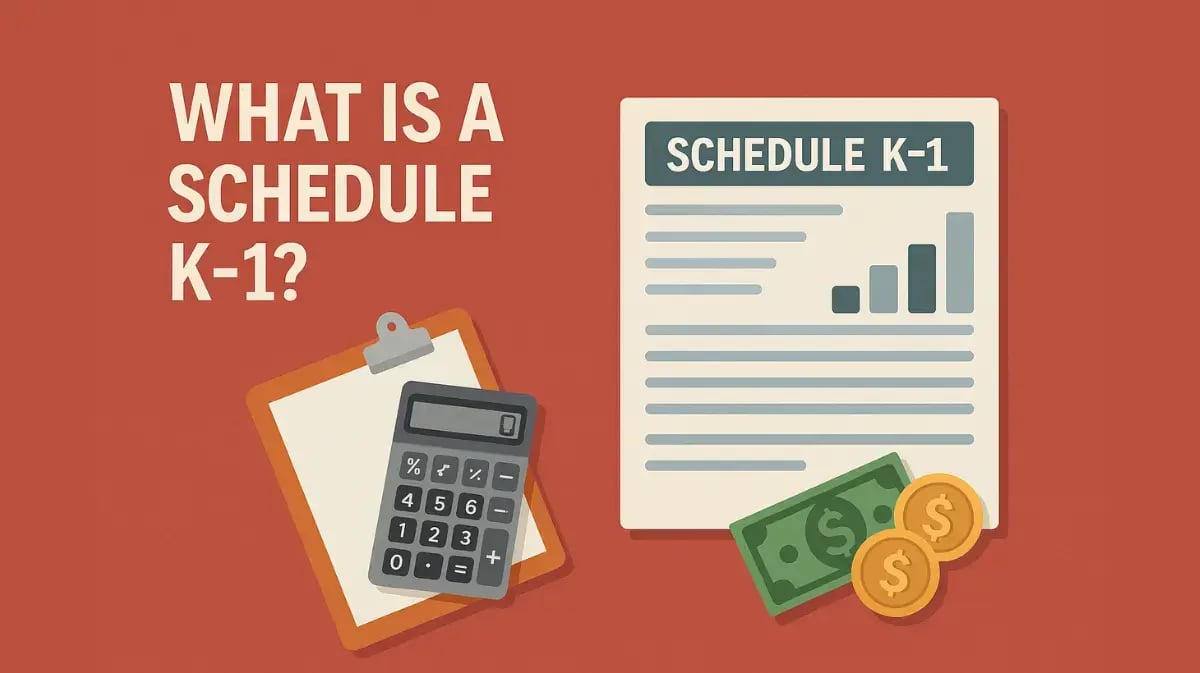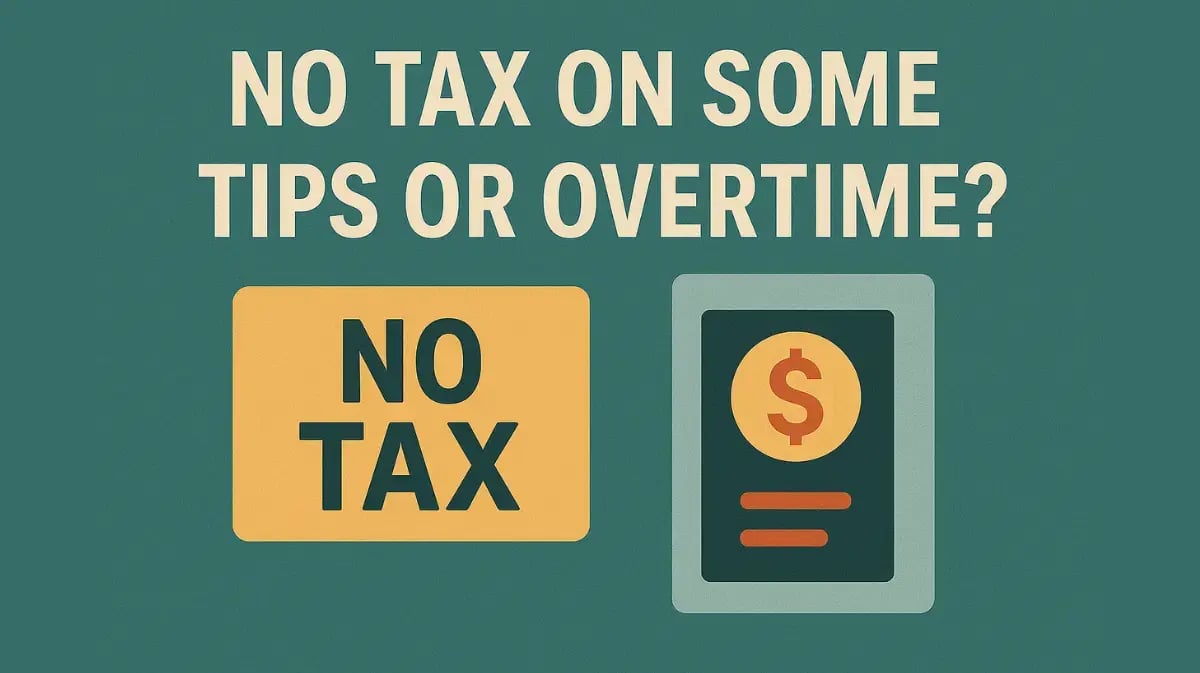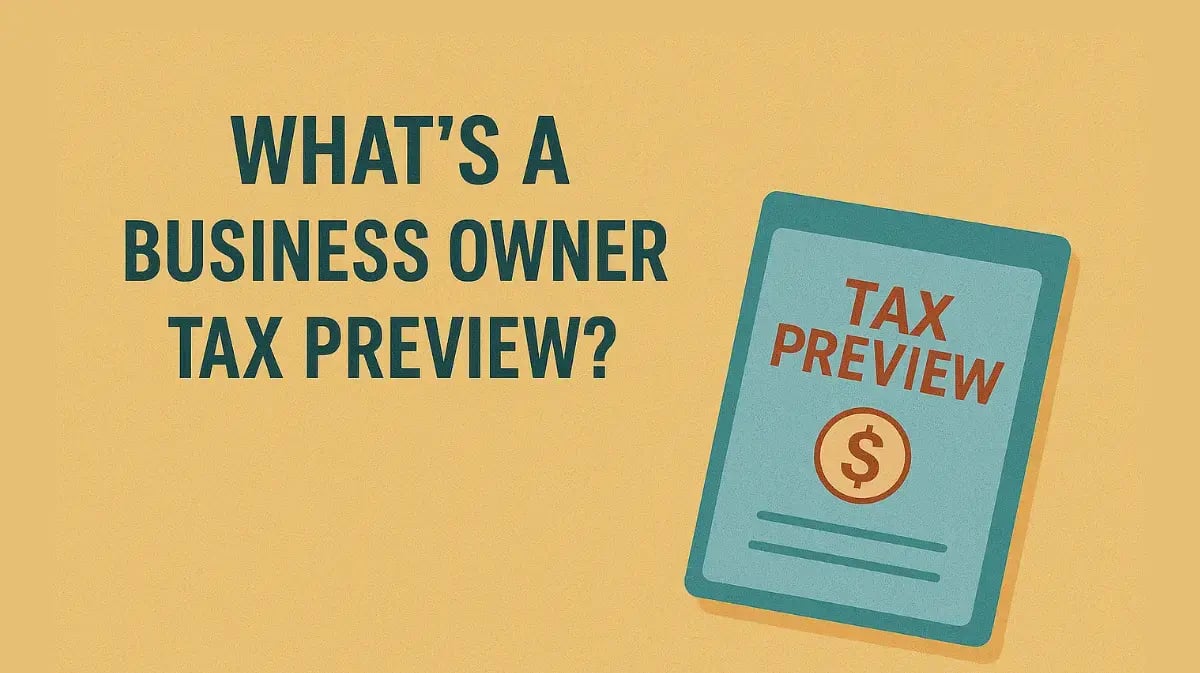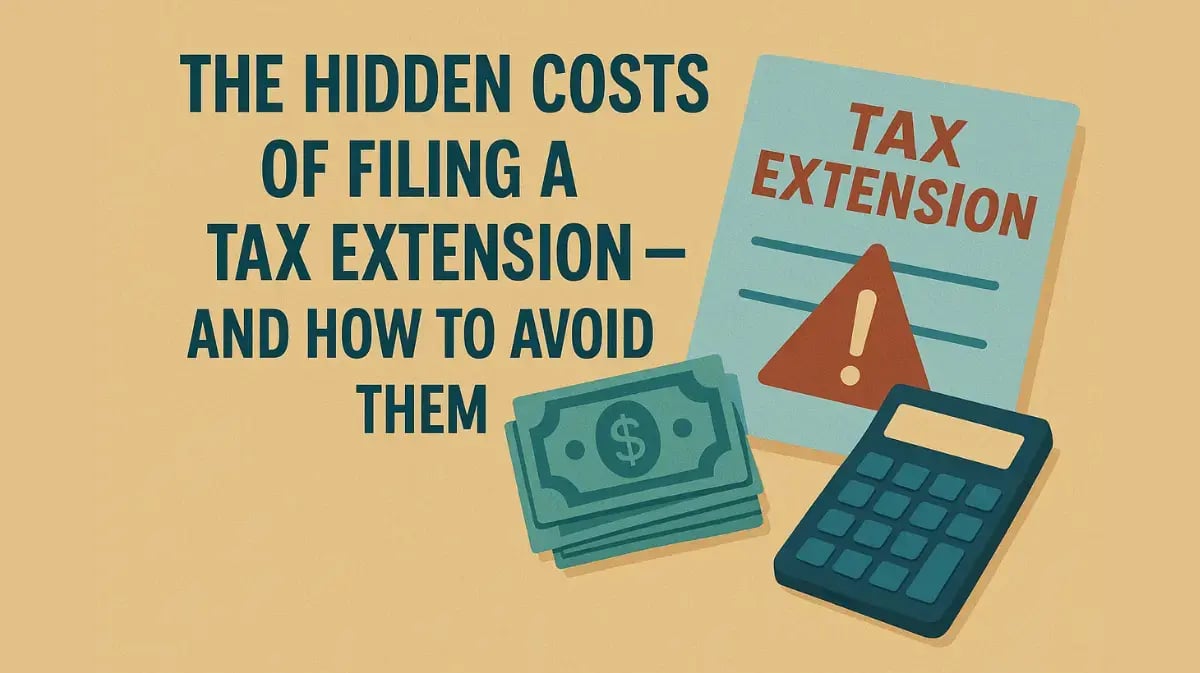5 Common Tax Mistakes Caused by Poor Bookkeeping
April 29th, 2025
8 min read
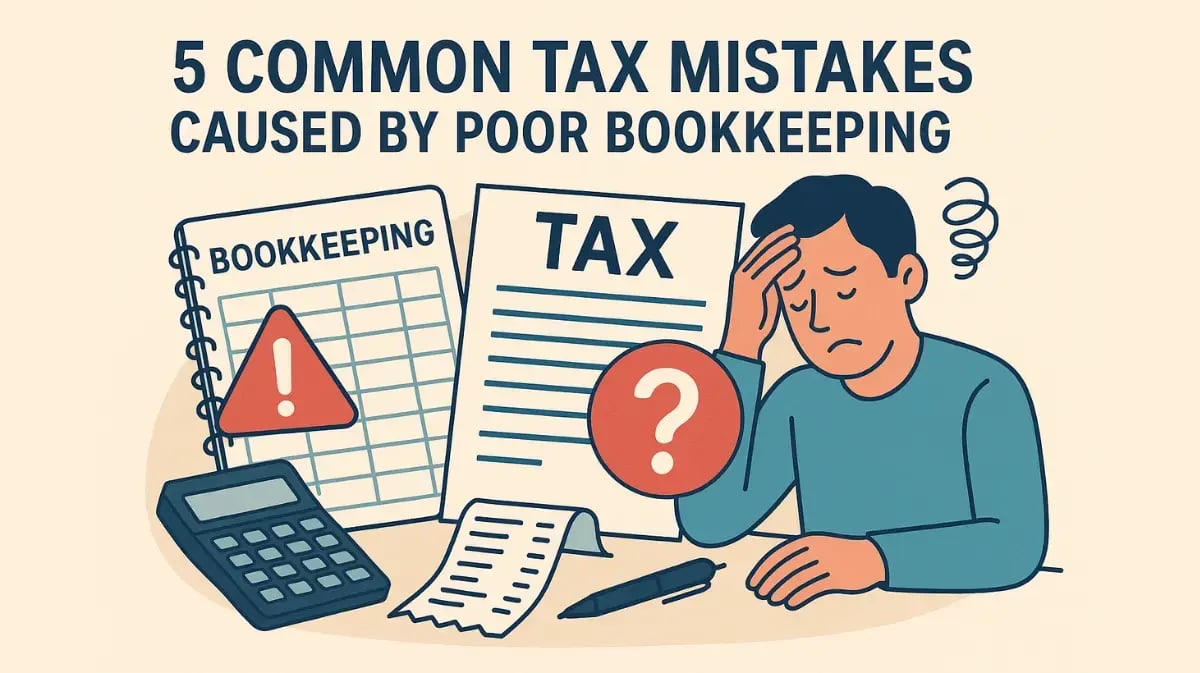
Small business owners often face enough pressure managing day-to-day operations without the added stress of tax season. Between juggling client demands, managing employees, and keeping cash flow steady, it’s easy for bookkeeping to take a backseat. But when your financial records are messy or inaccurate, it creates a snowball effect that leads to missed opportunities, incorrect filings, and potentially costly penalties.
Even a small mistake — like misclassifying expenses or failing to keep a few receipts — can trigger headaches down the road, from cash flow problems to compliance issues. Worse yet, inaccurate bookkeeping can increase your chances of facing an IRS audit — something no business owner wants to deal with.
Accurate financial records aren’t just about staying organized — they’re the foundation for a smooth tax season and a healthy business. Accurate bookkeeping helps you understand your financial health, make informed decisions, and improve your tax situation.
Below, we’ll highlight five common tax mistakes caused by poor bookkeeping and how to avoid them — so you can keep more of your hard-earned money and avoid unwanted surprises.
1. Misclassifying Business Expenses
Accurate expense tracking is essential for maintaining clean financial records and maximizing your tax deductions. However, when expenses are misclassified, it can create confusion, alter your financial reports, and even lead to trouble with the IRS. Understanding how this mistake happens — and how to avoid it — can save you time, money, and stress.
How It Happens
One of the most common mistakes in bookkeeping is misclassifying expenses. This usually happens when business and personal expenses get mixed together or when expenses are categorized incorrectly.
Examples include:
- Charging a personal meal to the business account.
- Incorrectly logging supplies as cost of goods sold.
- Recording a capital purchase as an expense
Why It's a Problem
Misclassifying expenses can trigger red flags with the IRS, leading to increased scrutiny or even a full audit. An audit consumes valuable time and resources and can result in costly penalties if your deductions are incorrect or unsupported.
Beyond the IRS, misclassified expenses distort your financial reports, making it harder to understand your true business performance. Overstating or understating profits can impact budgeting, staffing, and investment decisions. It can also lead to missed deductions or claiming ones you aren't entitled to — both of which can result in fines and interest. Accurate expense records help keep your business compliant and financially sound.
How to Fix It
Create Separate Business and Personal Accounts – Mixing business and personal expenses is one of the fastest ways to create confusion in your books. Open a dedicated business bank account and credit card to keep all business-related transactions separate from personal ones. This not only makes it easier to track expenses but also helps protect your business in case of an audit or legal issue.
Use Consistent Expense Categories – Develop a clear, standardized list of categories for all business expenses and stick to it. Most accounting software, like QuickBooks, allows you to create and customize categories to fit your business needs.
Train Your Team – If you have employees handling company expenses or bookkeeping, provide clear training on how to categorize expenses correctly. Walk them through common expense categories and examples of how to handle gray areas (like business meals vs. personal meals). Set up internal guidelines and a simple review process to catch mistakes before they become a bigger problem.
2. Missing Invoices and Payments
Keeping track of invoices and payments might seem like a small detail, but it can have a big impact on your business’s financial health. Missing documentation can lead to lost deductions, inaccurate records, and trouble if the IRS ever comes knocking.
Getting paid shouldn’t feel like chasing a runaway shopping cart, but without solid invoicing and tracking systems, too many business owners spend hours following up on payments that should’ve landed weeks ago.
How It Happens
In the rush of running a business, it's easy to let a few invoices slip through the cracks — especially if you're managing things manually or toggling between emails, spreadsheets, and mental checklists. Maybe a job got billed late. Maybe a client “never got the invoice.” Maybe it was emailed, but never followed up on.
Over time, these small misses snowball into a big problem: unpaid invoices, uncertain cash flow, and way too much time wasted chasing money that’s rightfully yours.
Why It's a Problem
Missing customer payments isn’t just an annoyance — it’s a direct hit to your business’s financial health. Here’s what’s at stake:
- Cash Flow Crunch: If you're not collecting, you’re not operating. Missed payments can bottleneck your ability to pay staff, vendors, or yourself.
- Lost Time and Productivity: Chasing down overdue payments pulls you away from growing your business.
- Customer Confusion (or Excuses): Without consistent and professional billing practices, even great clients may delay payment — or think they already paid.
How to Fix It
The good news? With a few simple tools and routines, you can stop the payment delays and start getting paid faster and more consistently.
Set a Weekly Routine – Schedule a specific time each week to sit down and reconcile your invoices. Match transactions to your bank and credit card statements to catch any discrepancies early. This regular habit helps ensure that nothing falls through the cracks and makes it easier to spot any unusual activity before it becomes a bigger problem.
Automate Your Invoicing – Use invoicing software like QuickBooks or integrated tools in your bookkeeping system to streamline your billing process. These tools allow you to automatically generate and send invoices, set up recurring invoices for repeat clients, and enable online payments to help you get paid faster.
Track Your AR Like a Pro – Track your accounts receivable (AR) like a pro by doing more than just sending invoices—make sure you’re actively monitoring them. Use dashboards or AR aging reports to see who owes you, how much they owe, and how long the payment has been outstanding. This kind of visibility helps you prioritize follow-ups and catch potential issues before they become bigger problems.
Establish Clear Payment Terms – Establish clear payment terms by setting expectations up front. Every invoice should include due dates, any applicable late fees, and accepted payment options. The more clearly you communicate these details, the fewer misunderstandings and payment delays you’ll face later on.
3. You Missed Payroll Tax Payments
Payroll taxes are a critical but often overlooked part of running a business. Between calculating withholdings, filing tax returns, and staying compliant with IRS regulations, it’s easy for small mistakes to slip through. Understanding how to manage payroll taxes properly will help you avoid costly missteps and keep your business on solid ground.
What It Means
Payroll taxes are one of the most complex areas of small business tax management — and one of the easiest to mess up. Small errors can snowball into larger problems if left unaddressed. The most common mistakes include:
- Miscalculating payroll taxes – Misunderstanding federal, state, and local tax rates or failing to account for employee benefits can lead to underpayment or overpayment.
- Forgetting to file payroll tax returns on time – Missing filing deadlines can result in automatic penalties and interest charges, even if unintentional.
- Incorrectly categorizing contractors versus employees – Misclassifying workers can lead to back taxes, penalties, and liability for unpaid benefits if the IRS determines that a contractor should have been treated as an employee.
Why It's a Problem
Payroll tax mistakes can lead to steep penalties, interest charges, and even legal action since they involve employee withholdings. Failing to remit the correct amounts for Social Security, Medicare, and income taxes can trigger fines, audits, and personal liability under the Trust Fund Recovery Penalty (TFRP).
How to Avoid It
Use Payroll Software – Tools like ADP automate tax calculations and filings, significantly reducing the chance of human error. These platforms can handle complex payroll issues like varying state tax rates, employee benefits, and overtime calculations. They also generate reports and send reminders to ensure you meet filing deadlines.
Payroll Service Provider – If payroll feels overwhelming or you’re concerned about making mistakes, consider working with a professional payroll service. Experienced payroll providers stay updated with the latest tax laws and regulations, ensuring that your filings are accurate and timely.
Schedule Regular Reviews – Conduct quarterly payroll audits to catch errors early. Review reports, employee classifications, and withholdings to ensure accuracy and timely filings. Regular checks help spot and fix issues before they escalate.
4. You Miss Quarterly Estimated Tax Payments
Paying taxes once a year isn’t enough for most small businesses. The IRS requires many businesses to make quarterly estimated payments, but it's easy to overlook or miscalculate them. Staying on top of these payments helps you avoid surprises, penalties, and cash flow issues.
What It Means
Business owners who expect to owe more than $1,000 in taxes at the end of the year are required to make quarterly estimated tax payments. Missing these payments or miscalculating them is a common issue for small business owners.
Why It's a Problem
Missing or underpaying quarterly taxes can result in expensive consequences. The IRS may impose penalties for late payments and charge interest on any unpaid taxes. This can also lead to a large, unexpected tax bill at year-end, putting a strain on your business's cash flow.
How to Avoid It
Set Up a Tax Savings Account – To avoid scrambling for funds when tax payments are due, set up a dedicated tax savings account. Transfer a consistent percentage of your revenue into this account each month to create a financial cushion and ensure you have enough set aside when quarterly payments are due. Automating these transfers can make the process easier and more consistent.
Work with an Accountant – Tax laws can be complex and change frequently, so working with an accountant can help you stay on track. An accountant can calculate the correct amount to set aside each quarter. They can also help you adjust your estimates if your income fluctuates throughout the year, ensuring you don't underpay or overpay.
Use a Tax Calendar – Keeping track of quarterly deadlines is essential to avoid penalties and late fees. Set up a tax calendar with reminders for each quarterly payment due date. Most accounting software platforms offer built-in reminders, but you can also use simple calendar apps to keep you on track.
5. Failing to Reconcile Bank Accounts Regularly
Keeping your bank records and bookkeeping aligned is essential for maintaining accurate financial reports. When your records don’t match, it can lead to cash flow issues, incorrect tax filings, and even missed income or expenses. Regularly reconciling your accounts helps you catch errors early and keeps your financial health on track.
How It Happens
A bank reconciliation is the process of matching your bookkeeping records with your bank statements to ensure they align. Errors can happen when you forget to enter deposits or expenses into your books, have duplicate entries in your records, or fail to track bank fees or interest charges. Over time, these small discrepancies can add up, making it harder to get an accurate picture of your financial health.
Why It's a Problem
When your bank records and books don’t match, it leads to inaccurate financial reports and increases the risk of tax filing errors. It also makes it harder to track cash flow accurately.
How to Fix It
Perform Monthly Reconciliations – Set a recurring schedule to reconcile your accounts at least once a month. Reviewing your bank statements regularly helps you catch missing transactions, unauthorized charges, or bank errors before they become bigger problems.
Use Automated Accounting Software – Tools like QuickBooks automatically match bank transactions to your books, reducing the chance of human error and saving time.
Review Reports Regularly – Take the time to review detailed reports, including cash flow and balance sheets, to ensure your records are accurate and up to date.
So, Be Honest: How Many Have You Experienced?
Avoiding tax mistakes starts with maintaining accurate, organized financial records. Small errors, like misclassifying expenses or missing receipts, can quickly snowball into costly penalties, cash flow issues, and even IRS audits. These problems can disrupt your business operations and create unnecessary stress — but the good news is that they are preventable with the right systems in place.
Accurate bookkeeping is the foundation of a successful tax season and long-term financial health. Clean records give you a clear picture of your business’s performance, help you maximize deductions, and make it easier to plan for future growth. Implementing consistent bookkeeping practices, using automated tools, and staying on top of deadlines can significantly reduce the risk of costly mistakes.
If you want to avoid tax headaches and streamline your financial management, consider working with a professional bookkeeper or accountant. An expert can help you set up efficient processes, catch potential issues early, and ensure you’re fully compliant with tax regulations. Investing in professional support gives you the confidence that your financials are in good hands.
Need help with bookkeeping and tax preparation? TMA Accounting has over 25 years of experience helping small businesses manage their books, minimize tax burdens, and avoid compliance headaches. Contact us today to see how we can help you stay on track — and stress-free — this tax season.
Blog Disclaimer: Nothing in this post constitutes legal, tax, or financial advice and is intended for informational and educational purposes only. This informational and educational material is not intended, and must not be taken, as legal, tax, or financial advice on any particular set of facts or circumstances or as recommendations that are suitable for any specific person. You need to contact a lawyer, accountant, or financial adviser licensed in your jurisdiction for advice on your specific questions, issues, and concerns. View our full Terms of Use here.





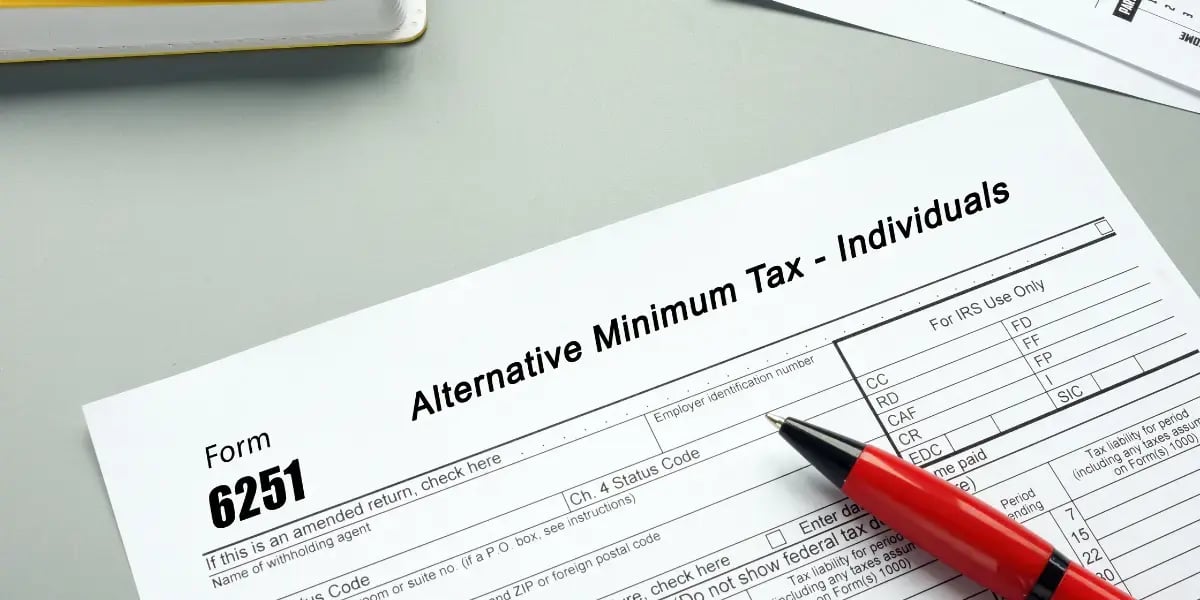


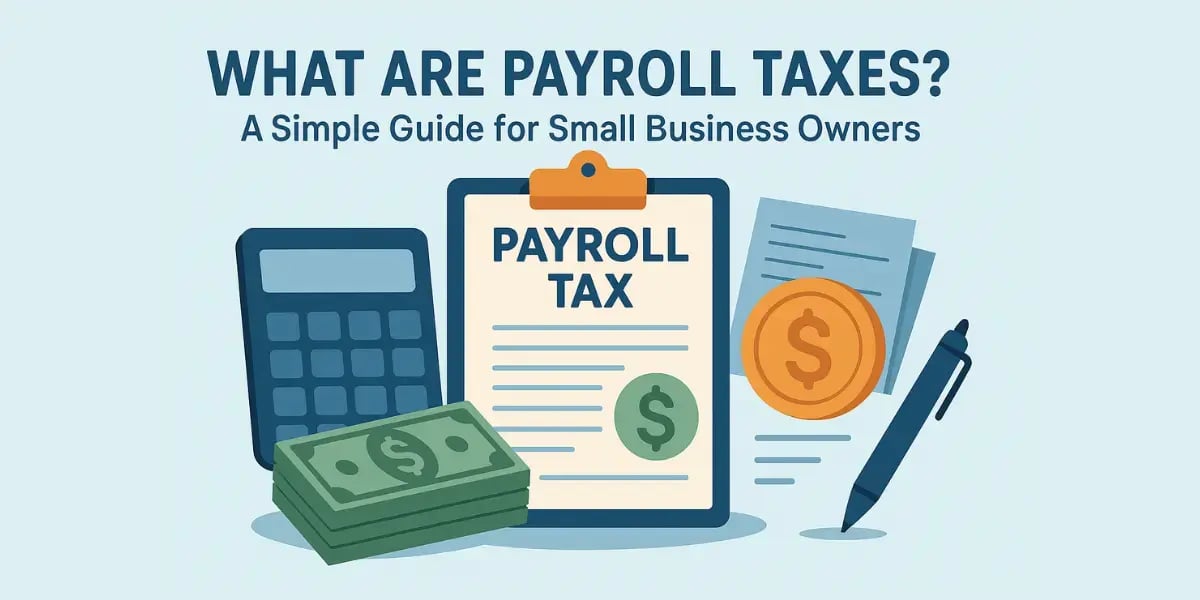


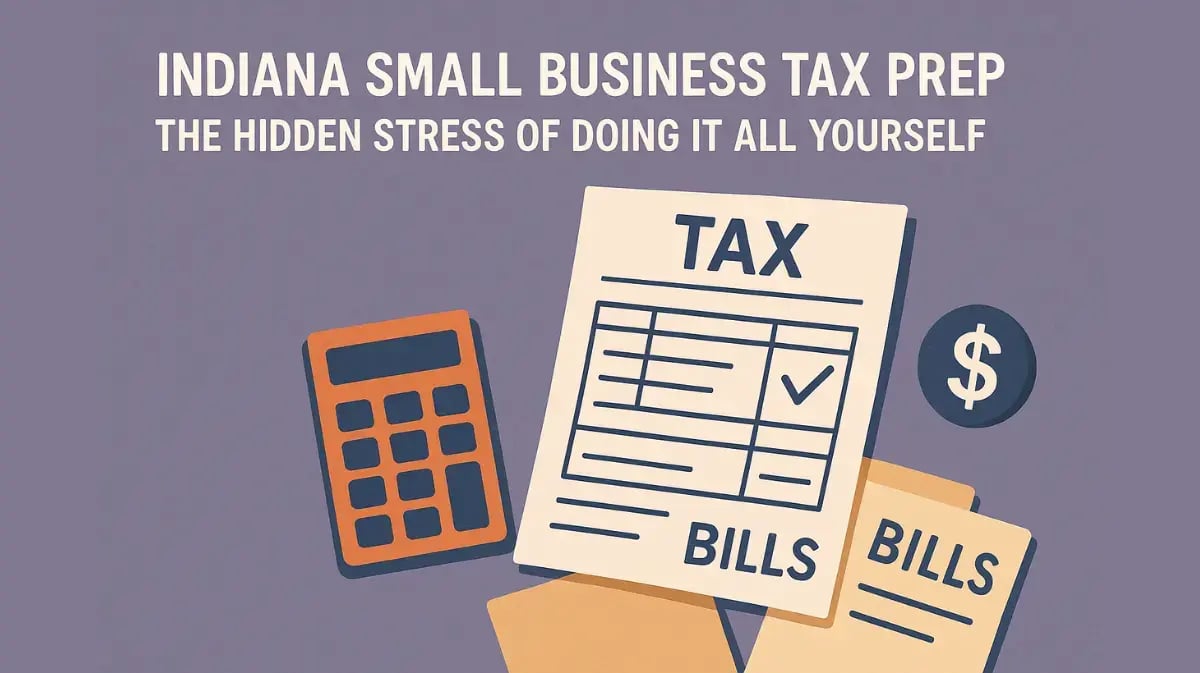


%20Early.webp?width=1200&height=673&name=5%20Consequences%20of%20Withdrawing%20from%20a%20401(k)%20Early.webp)
